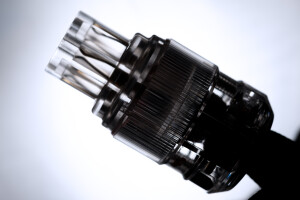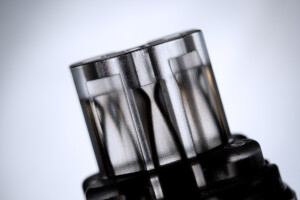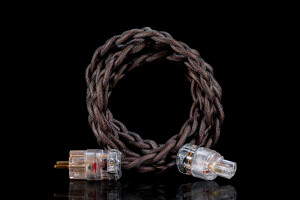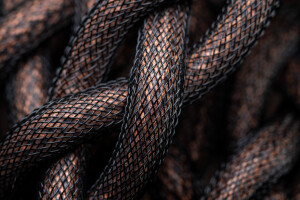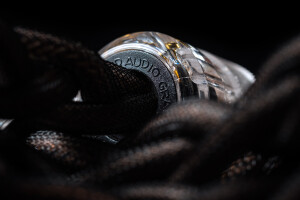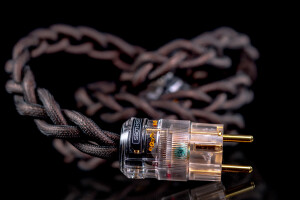LessLoss C-MARC Entropic Process power cord is its makers’ first cable that underwent their latest Entropic Process development, and now is the time to find out whether it’s any better versus its original. Enjoy!
Introduction
The seven LessLoss reviews published on this site since late 2018 shed some light on how this Lithuanian audio house goes about its business, but there’s still plenty to write about. New developments meant to push its core principles further and further emerge once in a while, while finding out whether they do so always is an adventure on its own right. Let’s just say that I’m a wee bit biased towards noise rejection done the Lithuanian way. At my disposal have been two LessLoss C-MARC power cords, their equivalent for speakers and one set of external Firewall for Loudspeakers modules. Boenicke W11 SE+ floorstanders and sound|kaos Vox 3afw monitors also have these passive filtering components and C-MARC hookup wiring in-built, and the same story is with Boenicke Audio PowerGate power distributor with its four captive M2 power cords. Come to think of it, LessLoss products occupy most junctures of my setup, so maybe an addiction to this stuff fits better than just a slight bias towards it. Boenicke Audio’s Sven Boenicke and sound|kaos’ founder Martin Gateley who also incorporate LessLoss’ tech in their own work make it this much more credible. Such things don’t happen by mere coincidence after all, or at least I don’t think they do.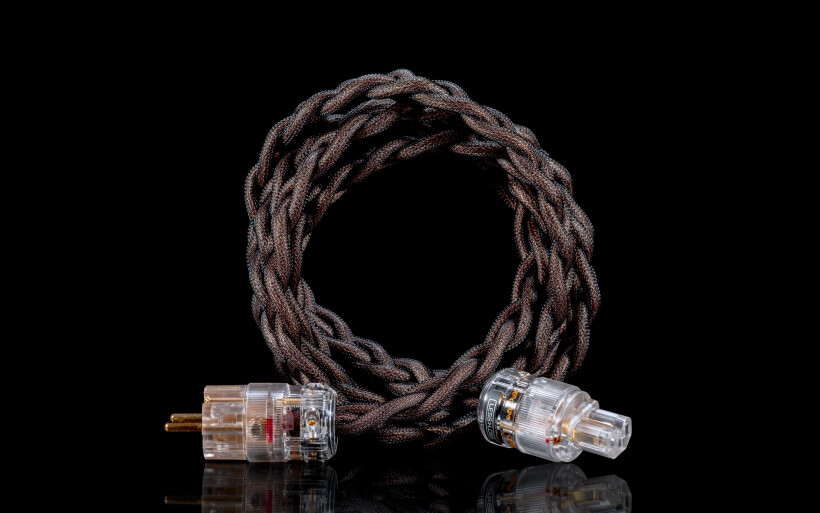 LessLoss components have been constant inhabitants of my setup for a specific reason only partially related to sound quality. As a self-styled reporter I appreciate hardware that allows me to easily track changes in the rig. Naturally the quicker I’m able to map these shifts, the better, and my platform generously infused with LessLoss accessories allows me to comfortably do just that. Although these products have their own sonic footprint, I’ve found it transparent enough to not mask anything in particular, which all things considered is very useful from my perspective.
LessLoss components have been constant inhabitants of my setup for a specific reason only partially related to sound quality. As a self-styled reporter I appreciate hardware that allows me to easily track changes in the rig. Naturally the quicker I’m able to map these shifts, the better, and my platform generously infused with LessLoss accessories allows me to comfortably do just that. Although these products have their own sonic footprint, I’ve found it transparent enough to not mask anything in particular, which all things considered is very useful from my perspective.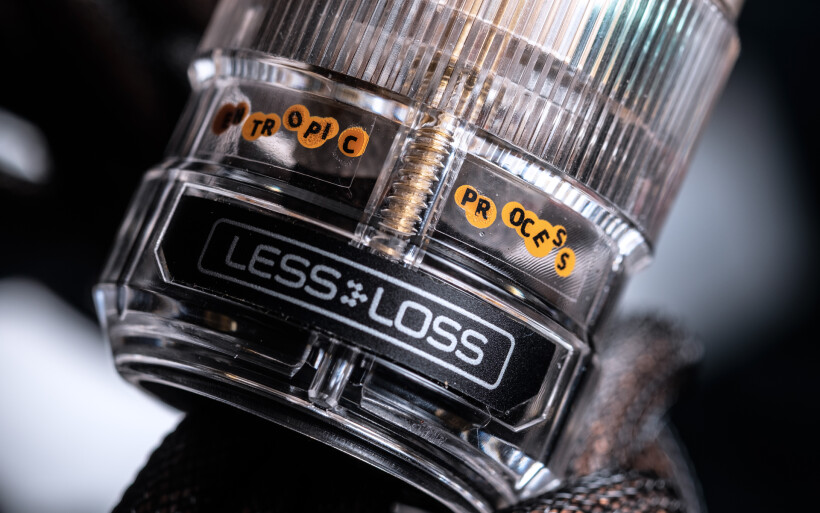 The LessLoss C-MARC power cable was their first product reviewed at this site, and awarded with our Victor badge on top of that. Three years ago I knew of no better solution, which is why two of these cords have been on duty under my roof ever since, and their use time can be counted in thousands of hours by now. Recently the Lithuanian roster introduced their costlier version of this power cord, baptized the LessLoss C-MARC Entropic Process, which according to its makers was designed to behave better than as if it had some 200+ years or so of burn-in on its clock. Naturally this piqued my interest. One brief mail later a loaner sample was dispatched my way, and today’s the day to finally reveal my findings.
The LessLoss C-MARC power cable was their first product reviewed at this site, and awarded with our Victor badge on top of that. Three years ago I knew of no better solution, which is why two of these cords have been on duty under my roof ever since, and their use time can be counted in thousands of hours by now. Recently the Lithuanian roster introduced their costlier version of this power cord, baptized the LessLoss C-MARC Entropic Process, which according to its makers was designed to behave better than as if it had some 200+ years or so of burn-in on its clock. Naturally this piqued my interest. One brief mail later a loaner sample was dispatched my way, and today’s the day to finally reveal my findings.
Build
Prior to proceeding with this report’s product we need to backtrack to LessLoss’ in-house developed C-MARC (Common-mode Auto-rejecting Cable) discovery that outperformed its now discontinued DFPC (Dynamic Filtering Power Cables) range. It even came at a lower price. Although both these developments were designed to strip signal from contamination to make it quieter, they differ in measures used to achieve this goal. The more potent C-MARC principle involves a unique geometry based on two counter-polarized, then fractally replicated coils of the same diameter and step; one turned clockwise and its equivalent twisted in the opposite direction. They superimpose mutually to form a unique bucking-coil connection, a solution originally developed in the 1930s’. Noise induced on these balanced strands is electrically cancelled due to their opposite polarity and geometry, which results in high S/N ratio and particular type of audible silence.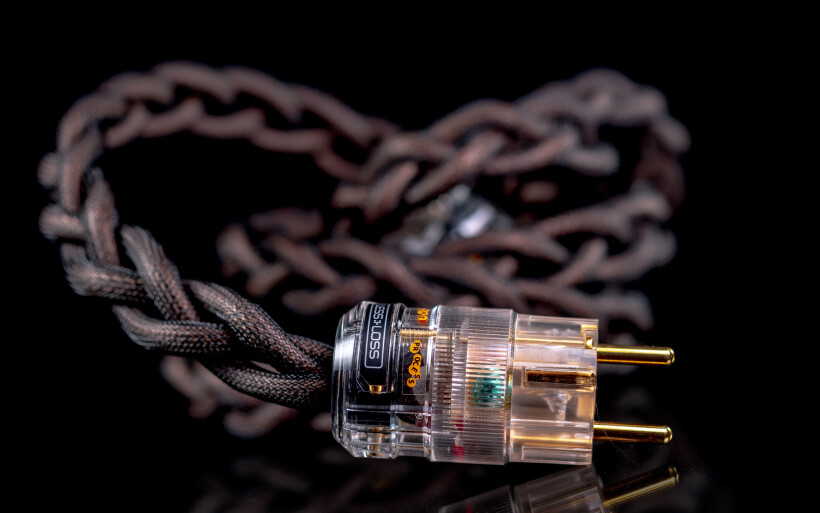 Although today’s fully-fledged C-MARC looks regular just as its predecessor, internally it’s just as intricate. 24 white cotton fiber strands form its core surrounded by 192 copper conductive strands, each electrically isolated from one another, followed by 96 gassed and mercerized black cotton strands. The copper component is then replicated and sits under a clear thin-walled Polyoelefin skin inside an outer protective braid comprised of 32 Polyethylene Terepthalate monofilament yarns. This gets us 760 strands of material per each C-MARC power cord’s leg. Since three form its main braid, the total number is 2280 strands. The conductor itself is a 0.125mm thin Litz wire with each its hair separately enameled, while the total conductive cross-sectional area is 13.824mm2 and very low on internal resistance. This complex blend of synthetic, cotton and copper is impossible to DIY and impervious to copying, that’s for sure. Considering that Lithuanians sell their cables per meter directly, who’d even bother with knock-offs even if there were any?
Although today’s fully-fledged C-MARC looks regular just as its predecessor, internally it’s just as intricate. 24 white cotton fiber strands form its core surrounded by 192 copper conductive strands, each electrically isolated from one another, followed by 96 gassed and mercerized black cotton strands. The copper component is then replicated and sits under a clear thin-walled Polyoelefin skin inside an outer protective braid comprised of 32 Polyethylene Terepthalate monofilament yarns. This gets us 760 strands of material per each C-MARC power cord’s leg. Since three form its main braid, the total number is 2280 strands. The conductor itself is a 0.125mm thin Litz wire with each its hair separately enameled, while the total conductive cross-sectional area is 13.824mm2 and very low on internal resistance. This complex blend of synthetic, cotton and copper is impossible to DIY and impervious to copying, that’s for sure. Considering that Lithuanians sell their cables per meter directly, who’d even bother with knock-offs even if there were any?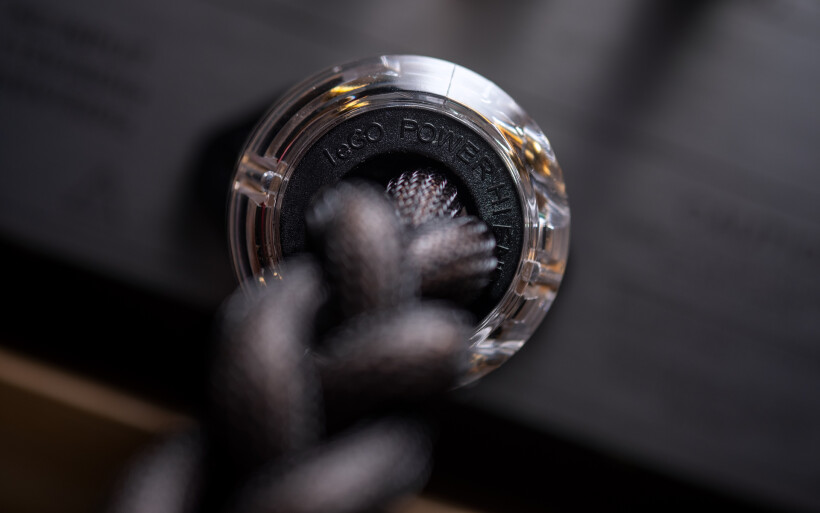 Those quick to ask about purity of the Lithuanian copper should know that purposely there is no answer to that question. Instead the ambitious team LessLoss openly spreads the word about factors that score far higher on the importance chart than this one spec many enthusiasts are still so obsessed with. For example, today’s plugs with 24K gold-plated copper contacts feature translucent enclosures because coloring or solidifying additives impact performance, and cotton in the C-MARC range is mercerized so its micro-fibers can swell and straighten out, which makes them stronger, more flexible and visually nicer than they normally are. C-MARCs meant for power delivery have this soft and pleasant to the touch fabric hidden under its synthetic outer jacket, but speaker C-MARC and Boenicke S3 in my possession reveal an outer two layers of cotton instead.
Those quick to ask about purity of the Lithuanian copper should know that purposely there is no answer to that question. Instead the ambitious team LessLoss openly spreads the word about factors that score far higher on the importance chart than this one spec many enthusiasts are still so obsessed with. For example, today’s plugs with 24K gold-plated copper contacts feature translucent enclosures because coloring or solidifying additives impact performance, and cotton in the C-MARC range is mercerized so its micro-fibers can swell and straighten out, which makes them stronger, more flexible and visually nicer than they normally are. C-MARCs meant for power delivery have this soft and pleasant to the touch fabric hidden under its synthetic outer jacket, but speaker C-MARC and Boenicke S3 in my possession reveal an outer two layers of cotton instead.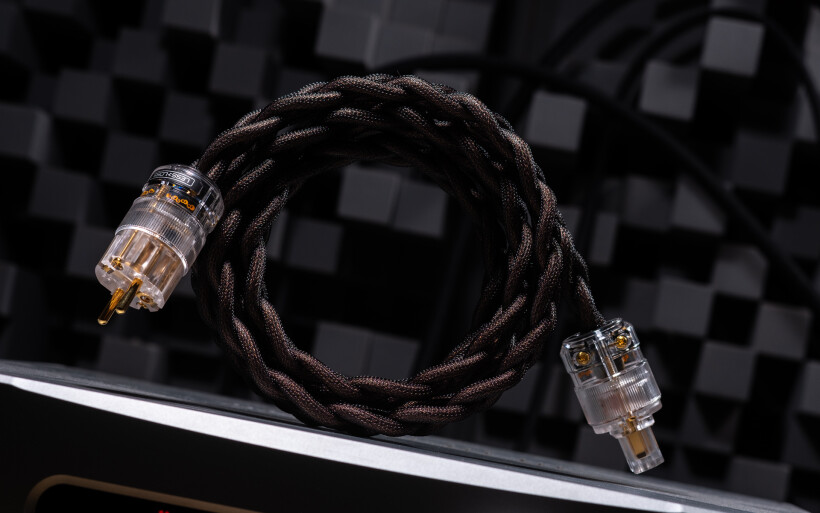 The 2m-long loaner looks and feels very solid. It’s light and perfectly usable albeit fairly stiff. Pins at its Schuko head are regular, while those inside the IEC plug purposely provide abnormally strong gripping action that ups the ante on performance accordingly to the manufacturer. A distinct red mark under the former translucent shell indicates which leg is live, and reversing polarity is not advised. The cable can accommodate multiple plug types on both its ends to match every commercial outlet I can think of, and can be had up to 3.5m length. Each 0.5m above 2m is $94 extra and discounts apply upon ordering two cords or more.
The 2m-long loaner looks and feels very solid. It’s light and perfectly usable albeit fairly stiff. Pins at its Schuko head are regular, while those inside the IEC plug purposely provide abnormally strong gripping action that ups the ante on performance accordingly to the manufacturer. A distinct red mark under the former translucent shell indicates which leg is live, and reversing polarity is not advised. The cable can accommodate multiple plug types on both its ends to match every commercial outlet I can think of, and can be had up to 3.5m length. Each 0.5m above 2m is $94 extra and discounts apply upon ordering two cords or more.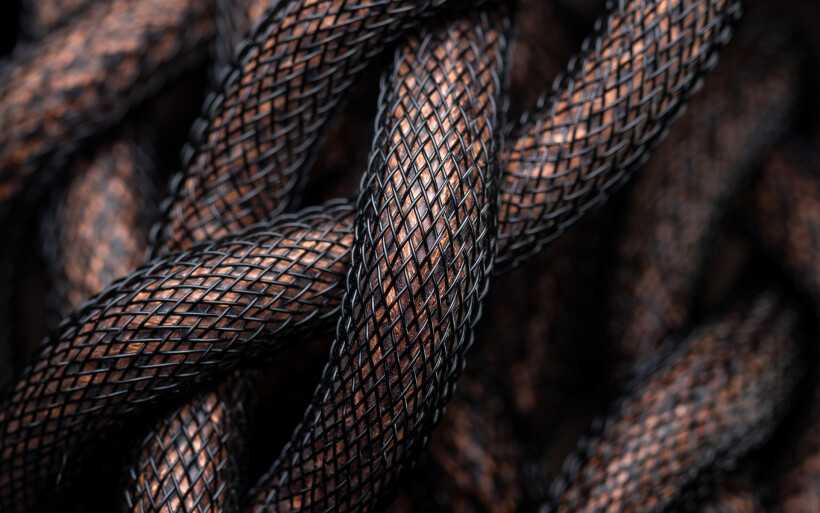 A regular LessLoss C-MARC power cable looks exactly like its upper echelon sibling that underwent its makers’ Entropic treatment. A playful yellow logo inside the latter’s IEC and wall plugs are the only visual distinction that sets them apart. The original 2m C-MARC that sells for $1148 demands commensurably less versus its next-gen successor priced at $1934 for the same length, which begs the obvious question about where all the extra money goes. Addressing it calls for yet another detour, but this time around towards the LessLoss Firewall for Loudspeakers noise-killer reviewed here. This highly potent petite signal conditioner was its makers’ first that underwent their proprietary Entropic Process. This procedure drastically ages a conductor material, so its internal structure changes and new properties are gained along the way; in-built directionality and far lesser susceptibility to micro-vibrations thus resilience to noise.
A regular LessLoss C-MARC power cable looks exactly like its upper echelon sibling that underwent its makers’ Entropic treatment. A playful yellow logo inside the latter’s IEC and wall plugs are the only visual distinction that sets them apart. The original 2m C-MARC that sells for $1148 demands commensurably less versus its next-gen successor priced at $1934 for the same length, which begs the obvious question about where all the extra money goes. Addressing it calls for yet another detour, but this time around towards the LessLoss Firewall for Loudspeakers noise-killer reviewed here. This highly potent petite signal conditioner was its makers’ first that underwent their proprietary Entropic Process. This procedure drastically ages a conductor material, so its internal structure changes and new properties are gained along the way; in-built directionality and far lesser susceptibility to micro-vibrations thus resilience to noise.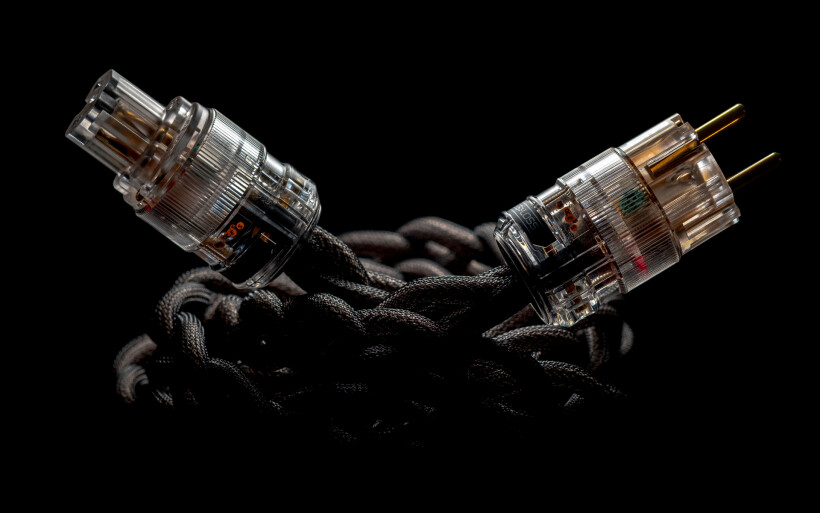 If entropy means gradual decline into unavoidable decay, then Lithuanians’ latest process has a very accurate name indeed. It was designed to accelerate what several human lifetimes of constant burn-in would do to copper, which becomes so soft that it can easily deform. That’s why Firewall for Loudspeakers modules’ thick conductive rods precisely surrounded by finned cylinders had to be locked inside their crystalline resin barrels. Inherently flexible Litz strands however have their individual hairs protected by thin lacquer coats under several layers of cotton and synthetic jackets, which effectively means that the latest C-MARC could undergo the Entropic Process without any risk to its conductive internals, as they have no load-bearing functionality unlike the Firewall for Loudspeakers.
If entropy means gradual decline into unavoidable decay, then Lithuanians’ latest process has a very accurate name indeed. It was designed to accelerate what several human lifetimes of constant burn-in would do to copper, which becomes so soft that it can easily deform. That’s why Firewall for Loudspeakers modules’ thick conductive rods precisely surrounded by finned cylinders had to be locked inside their crystalline resin barrels. Inherently flexible Litz strands however have their individual hairs protected by thin lacquer coats under several layers of cotton and synthetic jackets, which effectively means that the latest C-MARC could undergo the Entropic Process without any risk to its conductive internals, as they have no load-bearing functionality unlike the Firewall for Loudspeakers.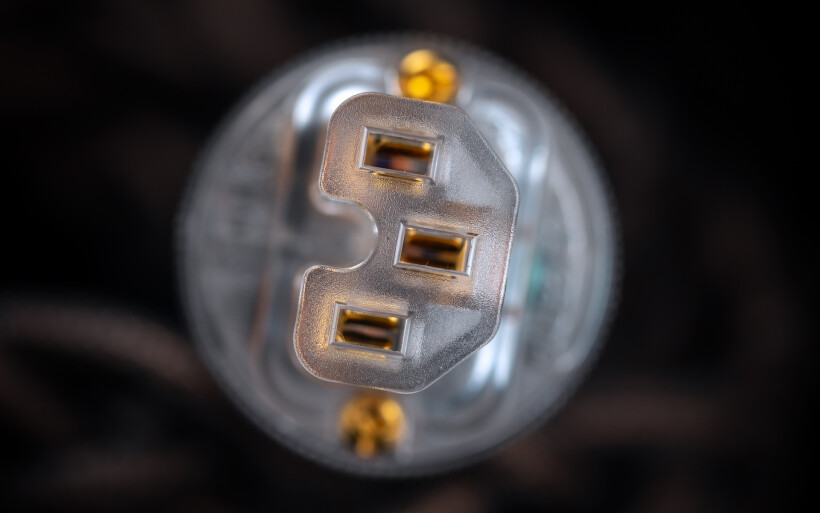 Here it would be fair to ask about the exact measures used for today’s drastic aging therapy, but that’s the company’s secret sauce. It most likely requires specific chemicals, equipment, environment and accuracy, but not regular burn-in devices and cryo baths. LessLoss’ entropic method applies only to their common-mode noise-rejection geometry, so cables by other manufacturers can’t be subject to it. Not only this, I’m told the Entropic Process has to be executed even at the earliest manufacturing stage there is, which means that existing regular C-MARCs also can’t undergo it later on. Such extremely aged conductors aren’t free from burn-in that still occurs, though at a much faster pace to net hundreds of years of use within several weeks, and here it’s of paramount importance to preserve their embedded directionality. At the LessLoss site we learn that it takes 30 hours from start to finish to make one Entropic-processed C-MARC cord versus the 18 hours each of its regular siblings demands, and now is the time to find out whether that half a day of work extra had any impact on sonics or not.
Here it would be fair to ask about the exact measures used for today’s drastic aging therapy, but that’s the company’s secret sauce. It most likely requires specific chemicals, equipment, environment and accuracy, but not regular burn-in devices and cryo baths. LessLoss’ entropic method applies only to their common-mode noise-rejection geometry, so cables by other manufacturers can’t be subject to it. Not only this, I’m told the Entropic Process has to be executed even at the earliest manufacturing stage there is, which means that existing regular C-MARCs also can’t undergo it later on. Such extremely aged conductors aren’t free from burn-in that still occurs, though at a much faster pace to net hundreds of years of use within several weeks, and here it’s of paramount importance to preserve their embedded directionality. At the LessLoss site we learn that it takes 30 hours from start to finish to make one Entropic-processed C-MARC cord versus the 18 hours each of its regular siblings demands, and now is the time to find out whether that half a day of work extra had any impact on sonics or not.
Sound
Innuos Statement handled storage/transport, then LampizatOr Pacific DAC (KR Audio T-100/Living Voice 300B + KR Audio 5U4G Ltd. Ed.) passed signal to a Trilogy 915R/995R set. From there Boenicke S3 speaker cable connected either to sound|kaos Vox 3afw or Boenicke Audio W11 SE+ speakers. Interconnects used were Audiomica Laboratory Erys Excellence RCAs, Boenicke Audio IC3 CG and XLRs which I DIY-ed. All key hardware was powered by Boenicke Audio Power Gate distributor box plus its three captive M2 cords and two LessLoss C-MARCs. The USB chain included only one Mercury3.0 USB cable. A set of external LessLoss Firewall for Loudspeakers modules complimented both speaker sets, while a Fidelizer EtherStream was in-between my Linksys WRT160N router and Innuos Statement server. ISOL-8’s Prometheus PSU connected to the router and network switch. Several loaner cables to power each of my system’s components would be fun for sure, but also quite the hassle during swaps. That’s why I specifically asked for just one latest C-MARC of the same length as its two non-entropic equivalents I’ve been using since late 2018. Ideally it should locate in-between a power conditioner/distributor and wall outlet to spread its silencing effect across my entire platform, but Boenicke Audio PowerGate’s fixed main M2 cable covers this base already. Furthermore, LessLoss always says to start at the source, not at the distributor’s connection to the wall. Lampizator Pacific was therefore the best companion for today’s product, and as it turned out, good enough to grant me all the insight to write this entire chapter. Although there was no need to power my transport or preamp via the newcomer C-MARC, I did it anyway just to confirm my initial impressions.
Several loaner cables to power each of my system’s components would be fun for sure, but also quite the hassle during swaps. That’s why I specifically asked for just one latest C-MARC of the same length as its two non-entropic equivalents I’ve been using since late 2018. Ideally it should locate in-between a power conditioner/distributor and wall outlet to spread its silencing effect across my entire platform, but Boenicke Audio PowerGate’s fixed main M2 cable covers this base already. Furthermore, LessLoss always says to start at the source, not at the distributor’s connection to the wall. Lampizator Pacific was therefore the best companion for today’s product, and as it turned out, good enough to grant me all the insight to write this entire chapter. Although there was no need to power my transport or preamp via the newcomer C-MARC, I did it anyway just to confirm my initial impressions.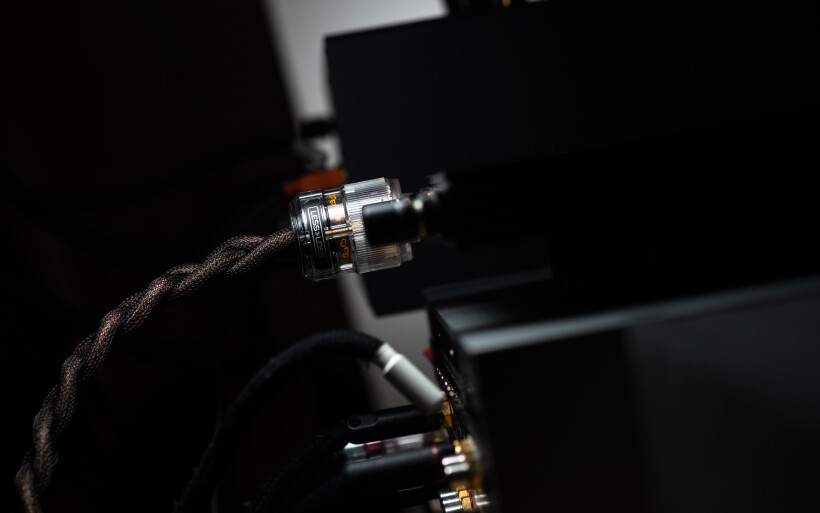 Boenicke Audio PowerGate’s three captive M2 cords usually connect to my DAC, Statement and Trilogy 915R, while two separate regular C-MARCs plugged into that distribution bar power two Trilogy 995R monos. One of those standalone cables was needed for my comparison however, which led to several changes. Three M2s now fed Trilogy’s entire set, while original C-MARCs were on duty with Pacific and Statement, and LessLoss C-MARC Etropic Process cord was ready for action just next to them. To learn its influence I had to turn off my DAC, connect either old or new C-MARC and flip its power switch again. Prior to any auditions polarities of all cables naturally were checked.
Boenicke Audio PowerGate’s three captive M2 cords usually connect to my DAC, Statement and Trilogy 915R, while two separate regular C-MARCs plugged into that distribution bar power two Trilogy 995R monos. One of those standalone cables was needed for my comparison however, which led to several changes. Three M2s now fed Trilogy’s entire set, while original C-MARCs were on duty with Pacific and Statement, and LessLoss C-MARC Etropic Process cord was ready for action just next to them. To learn its influence I had to turn off my DAC, connect either old or new C-MARC and flip its power switch again. Prior to any auditions polarities of all cables naturally were checked. Considering where LessLoss C-MARC Entropic Process power cable’s roots are, let’s first recap what its predecessor model did. It said yes to elevated resolution, accuracy, focus and dynamics, fine transients, quiet background and neutral timbre. By not being at all harsh, brittle or artificial it kept listening fatigue at bay, wasn’t slow at all and didn’t flaunt with flashy personality. If anything, my system with two original C-MARCs sounded relaxed, natural and pleasing, but their potency emerged as the trait that impressed me the most. At that time I simply didn’t experience other power cables capable of changes beyond mild or subtle, but the two LessLoss loaners proved otherwise, so my first encounter with them was quite the lesson.
Considering where LessLoss C-MARC Entropic Process power cable’s roots are, let’s first recap what its predecessor model did. It said yes to elevated resolution, accuracy, focus and dynamics, fine transients, quiet background and neutral timbre. By not being at all harsh, brittle or artificial it kept listening fatigue at bay, wasn’t slow at all and didn’t flaunt with flashy personality. If anything, my system with two original C-MARCs sounded relaxed, natural and pleasing, but their potency emerged as the trait that impressed me the most. At that time I simply didn’t experience other power cables capable of changes beyond mild or subtle, but the two LessLoss loaners proved otherwise, so my first encounter with them was quite the lesson.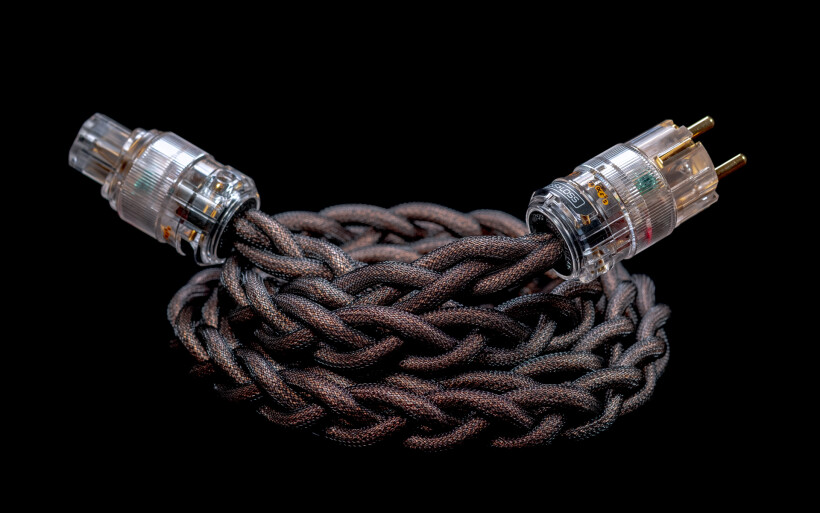 Audiomica’s Ness Excellence cables were purposely geared towards heft to complement valve amps and widebanders, so C-MARCs’ vastly different approach that included less oomph and more fitness was no surprise at all. The more universally profiled latter duo far easier showed what my electronics did and how. That tailoring meant high hardware compliance and usefulness in my work, and after several days of auditions I managed to finally connect noise rejection with background silence, smoothness, insight and lack of grain. C-MARCs were all about that, and against their rivals had the upper hand on detail retrieval, sensuality and palpable highs with longer decay, while their organic yet revealing disposition had me puzzled because then I wasn’t aware those features could combine and coexist.
Audiomica’s Ness Excellence cables were purposely geared towards heft to complement valve amps and widebanders, so C-MARCs’ vastly different approach that included less oomph and more fitness was no surprise at all. The more universally profiled latter duo far easier showed what my electronics did and how. That tailoring meant high hardware compliance and usefulness in my work, and after several days of auditions I managed to finally connect noise rejection with background silence, smoothness, insight and lack of grain. C-MARCs were all about that, and against their rivals had the upper hand on detail retrieval, sensuality and palpable highs with longer decay, while their organic yet revealing disposition had me puzzled because then I wasn’t aware those features could combine and coexist.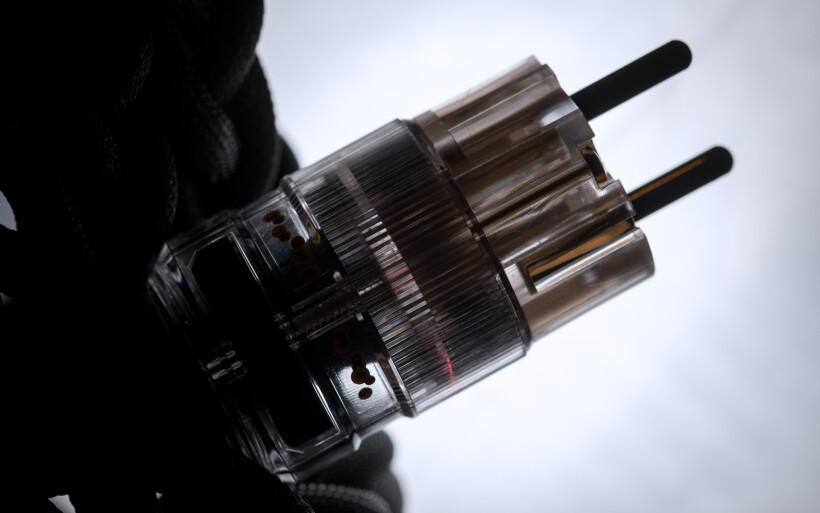 LessLoss C-MARCs’ delivery was fully free from any excessive shine, itchiness, tension, nervousness and metallic tint, but at no cost paid by diluting the message or making it dull. Their approach took some edge off music without making it prettier than it was while Audiomica’s cables applied heavy makeup on it, and the difference on this front between the rivals was quite obvious. The two Lithuanians managed to blend clarity, transparency and backdrop blackness with tone, saturation and roundness, but in such a way that any biases towards any specific trait were kept in check. This evenness and polish were the clear sign of a higher-tiered, more mature performance versus the more picturesque reality-altering Audiomica products.
LessLoss C-MARCs’ delivery was fully free from any excessive shine, itchiness, tension, nervousness and metallic tint, but at no cost paid by diluting the message or making it dull. Their approach took some edge off music without making it prettier than it was while Audiomica’s cables applied heavy makeup on it, and the difference on this front between the rivals was quite obvious. The two Lithuanians managed to blend clarity, transparency and backdrop blackness with tone, saturation and roundness, but in such a way that any biases towards any specific trait were kept in check. This evenness and polish were the clear sign of a higher-tiered, more mature performance versus the more picturesque reality-altering Audiomica products.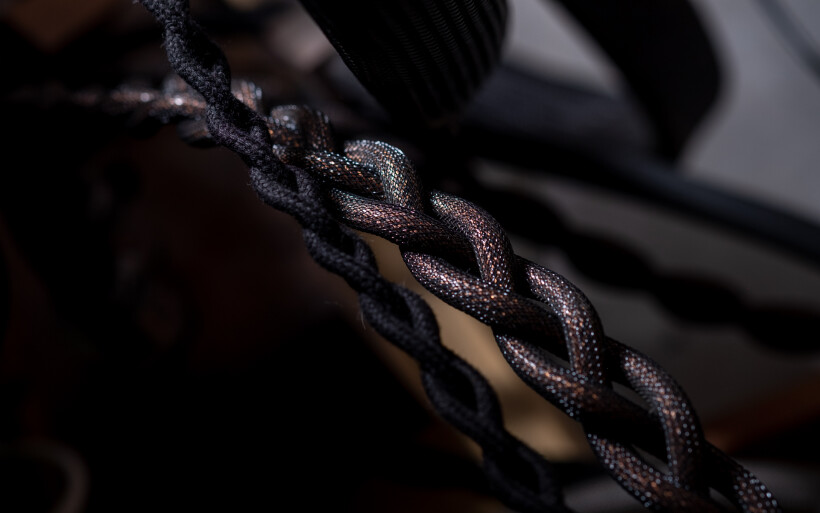 Further differences stretched to imaging. The more upfront Ness Excellence cables locked vocals in-between both speakers to effectively dilute and oversize them a bit, while C-MARCs rendered the same view deeper, wider, filled with more subtleties and higher oxygen content, which translated into more precisely outlined and articulate sound sources with no harm done to their humane textural fill. The latter’s multi-layered, breathing and utmost dark canvas sealed the deal. All in all, I’ve found the original C-MARCs very easygoing, relaxed, refined and meticulously balanced, and three years later my take on them didn’t change. I’ve heard cables that did more, but were either far costlier or not as fit for my needs as these Lithuanian cords.
Further differences stretched to imaging. The more upfront Ness Excellence cables locked vocals in-between both speakers to effectively dilute and oversize them a bit, while C-MARCs rendered the same view deeper, wider, filled with more subtleties and higher oxygen content, which translated into more precisely outlined and articulate sound sources with no harm done to their humane textural fill. The latter’s multi-layered, breathing and utmost dark canvas sealed the deal. All in all, I’ve found the original C-MARCs very easygoing, relaxed, refined and meticulously balanced, and three years later my take on them didn’t change. I’ve heard cables that did more, but were either far costlier or not as fit for my needs as these Lithuanian cords.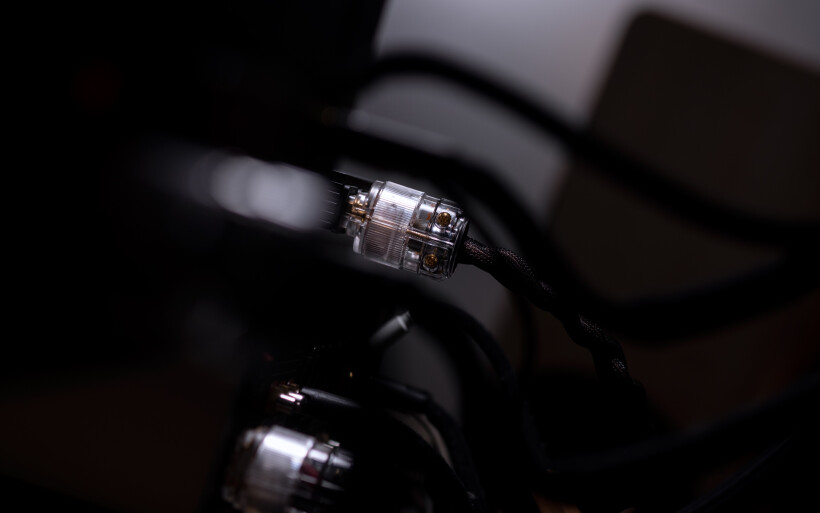 Now, moving on from the first C-MARC generation of power cables, their entropic-processed sibling is alike-profiled at its core and there’s no question about it, but at the same time it offers substantially more. LessLoss’ latest procedure was designed to push the latter’s noise-rejecting capabilities even further to result in an even more silent aural perspective. Considering what I already know about that deep-fetching quietness and how I understand it, I looked forward to more roundness and flesh here and there, perhaps even greater smoothness, blacker backdrop inhabited by more particles plus more flowing view in general. It turned out that my guesswork was only partially correct, however. Although similar to the original, the latest C-MARC isn’t just its slightly better version. On several counts it’s a noticeably different product that also quickly revealed itself as far better by my standards.
Now, moving on from the first C-MARC generation of power cables, their entropic-processed sibling is alike-profiled at its core and there’s no question about it, but at the same time it offers substantially more. LessLoss’ latest procedure was designed to push the latter’s noise-rejecting capabilities even further to result in an even more silent aural perspective. Considering what I already know about that deep-fetching quietness and how I understand it, I looked forward to more roundness and flesh here and there, perhaps even greater smoothness, blacker backdrop inhabited by more particles plus more flowing view in general. It turned out that my guesswork was only partially correct, however. Although similar to the original, the latest C-MARC isn’t just its slightly better version. On several counts it’s a noticeably different product that also quickly revealed itself as far better by my standards.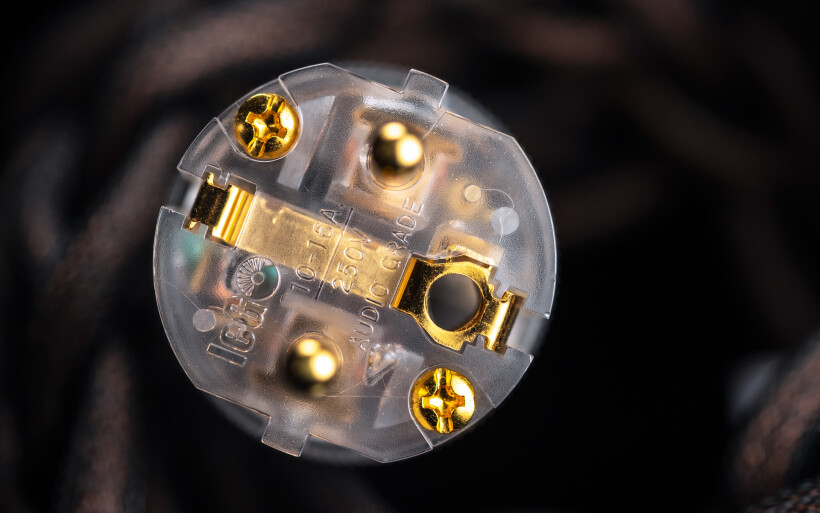 Shifts between power cables are easy to map, but both compared C-MARCs, quite identical in appearance, had me in for a big surprise. I first imagined that noticing any firm distinctions between them should take at least several days with enforced yet helpful breaks along the road, but that wasn’t the case at all. The rough idea where the latest LessLoss positioned itself had revealed itself to me within minutes, and that I truly didn’t expect. The newcomer C-MARC’s take on the usual repertoire was quicker, more oxygenated, direct and immediate, just as if its general meta took a firm turn towards the hi-res route. Its older noticeably heftier and more polite version portrayed vocal outlines thicker, rounder and a touch veiled in comparison, didn’t reach as low, and had sibilants and rougher edges on mediocre recordings emphasized more. This effectively meant that the rounder thicker original C-MARC was glossier and more itchy up high, while today’s more articulate and speedier specimen was perfectly clean.
Shifts between power cables are easy to map, but both compared C-MARCs, quite identical in appearance, had me in for a big surprise. I first imagined that noticing any firm distinctions between them should take at least several days with enforced yet helpful breaks along the road, but that wasn’t the case at all. The rough idea where the latest LessLoss positioned itself had revealed itself to me within minutes, and that I truly didn’t expect. The newcomer C-MARC’s take on the usual repertoire was quicker, more oxygenated, direct and immediate, just as if its general meta took a firm turn towards the hi-res route. Its older noticeably heftier and more polite version portrayed vocal outlines thicker, rounder and a touch veiled in comparison, didn’t reach as low, and had sibilants and rougher edges on mediocre recordings emphasized more. This effectively meant that the rounder thicker original C-MARC was glossier and more itchy up high, while today’s more articulate and speedier specimen was perfectly clean.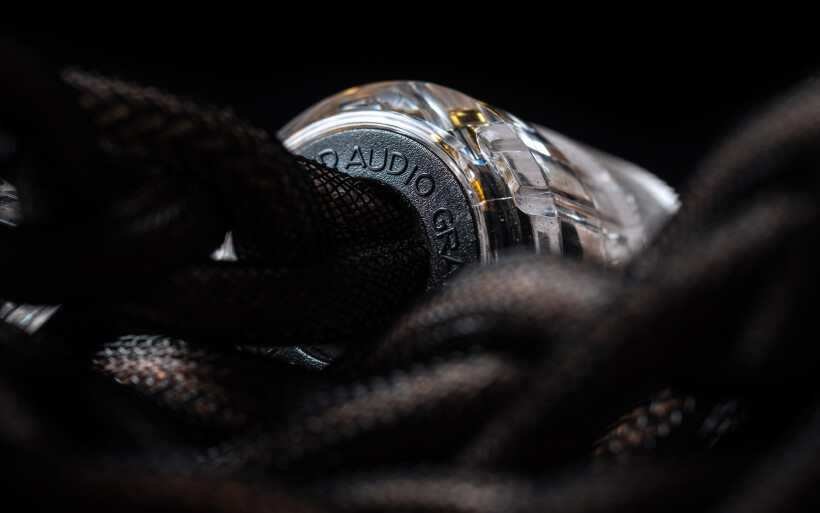 How my setup staged with each C-MARC was the biggest difference of them all. Openness, directness and key virtual shapes served up close and personal are Lampizator Pacific’s trademark virtues, which sound|kaos Vox 3afw monitors positioned as nearfield speakers amplify even more. Their conjoined effort effectively puts me inside a sphere where I’m literally surrounded by musicians if a recording allows, and the sensation becomes quite mental at times. With this in mind, the entropic-processed C-MARC located me inside that highly potent huge aural illusion even closer to sound sources than its kin, so it secured more points for their visibility and sensible physical feel. Although I’ve found the newcomer a touch slimmer, it packed more punch to net a substantially more elastic, sportier and tactile outcome, and had voices less chunky, yet more organic and articulate in comparison. Still, potency was the key word yet again. It was very clear which C-MARC pushed my rig’s performance more and how it simply became better. Considering how LessLoss’ newly processed power cord presented itself against its very accomplished previous version, and how much this design progressed over the last three years in general, its price increase is fully justified in my book.
How my setup staged with each C-MARC was the biggest difference of them all. Openness, directness and key virtual shapes served up close and personal are Lampizator Pacific’s trademark virtues, which sound|kaos Vox 3afw monitors positioned as nearfield speakers amplify even more. Their conjoined effort effectively puts me inside a sphere where I’m literally surrounded by musicians if a recording allows, and the sensation becomes quite mental at times. With this in mind, the entropic-processed C-MARC located me inside that highly potent huge aural illusion even closer to sound sources than its kin, so it secured more points for their visibility and sensible physical feel. Although I’ve found the newcomer a touch slimmer, it packed more punch to net a substantially more elastic, sportier and tactile outcome, and had voices less chunky, yet more organic and articulate in comparison. Still, potency was the key word yet again. It was very clear which C-MARC pushed my rig’s performance more and how it simply became better. Considering how LessLoss’ newly processed power cord presented itself against its very accomplished previous version, and how much this design progressed over the last three years in general, its price increase is fully justified in my book.
Summary
Although the LessLoss family is as diverse as it is unique, its inhabitants reviewed on this site occupy different tiers of my subjective roster. The LessLoss Echo’s End Original DAC, Bindbreaker decouplers and C-MARC speaker cable sit a bit below its Echo’s End Reference DAC, C-MARC power cord and Firewall 64X filters. LessLoss Firewall for Loudspeakers positioned above them all impressed me the most, and now the C-MARC Entropic Process power cord joins it at the top of my list.
When I get to choose between penning a story about say a DAC and power cable, the former seems the far more appealing route in most cases but not today. LessLoss’ noise-silencing technology is its most interesting and important work, while various product types generously infused with it showcase how beneficial it actually is. Although today’s C-MARC Entropic Process power cord does that brilliantly, finding out how much better it turned out to be versus its predecessor was the key discovery this time around. Those who, like me, have been using the latter cable should ready themselves for quite an unexpected surprise that this latest incarnation offers. My tip of the hat to team LessLoss for improving their own C-MARC game this meaningfully, and not charging an arm and leg for that progress. ‘Till next time!
Associated Equipment:
- Amplifier: Trilogy 995R
- DAC: LampizatOr Pacific (KR Audio T-100 / Living Voice 300B + KR Audio 5U4G Ltd. Ed.)
- Speakers: Boenicke Audio W11 SE+, sound|kaos Vox 3afw
- Transport: Innuos Statement
- Preamplifier: Trilogy 915R
- Speaker cables: Boenicke Audio S3, LessLoss C-MARC
- Speaker signal conditioning: LessLoss Firewall for Loudspeakers
- Interconnects: Boenicke Audio IC3 CG
- Power components: Gigawatt PC-3 SE EVO+/LC-3 EVO, LessLoss C-MARC, Boenicke Audio Power Gate, iFi audio PowerStation, ISOL-8 Prometheus
- USB components: iFi audio Mercury3.0
- Rack: Franc Audio Accesories Wood Block Rack
- Network: Fidelizer EtherStream, Linksys WRT160N
- Music: NativeDSD
Retail prices of reviewed components in EU (incl. tax):
- LessLoss C-MARC Entropic Process power cord 2/2.5/3/3.5 meters: $1’934/$2’028/$2’122/$2’216
Manufacturer: LessLoss





